JAISALMER
Welcome to Jaisalmer
Jaisalmer, often called the Golden City, is a jewel in the heart of the Thar Desert. On behalf of the Jaisalmer Guide Association, we are proud to share the charm of this historic destination with travelers from across the world. Known for its golden sandstone glow, majestic forts, intricately carved havelis, and timeless desert culture, Jaisalmer is more than just a city—it is an experience.
Every corner of Jaisalmer tells a story: narrow winding lanes, ancient courtyards, and vibrant bazaars reflect centuries of tradition and hospitality. From exploring the living fort and royal mansions to enjoying camel safaris and sunsets on the dunes, visitors are welcomed into a world where history and warmth walk hand in hand.
To visit Jaisalmer is to witness heritage, beauty, and heartfelt hospitality that stay with you long after you leave. It is truly a traveler’s dream and a photographer’s paradise.
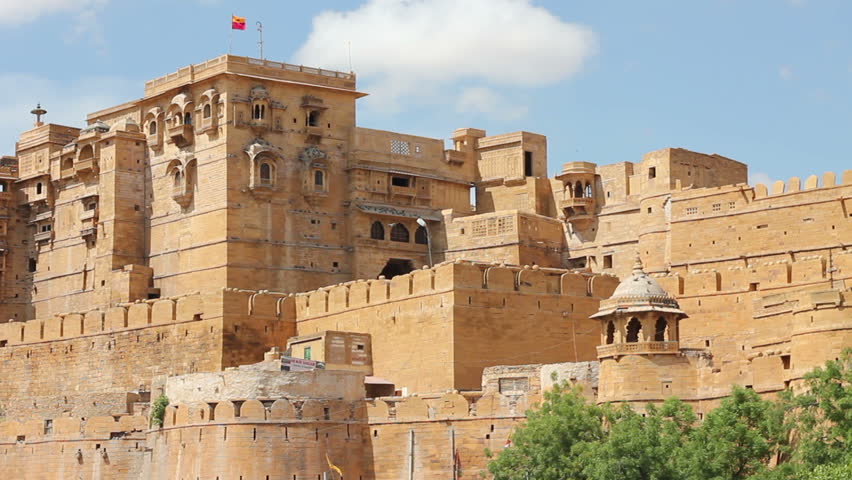
Jaisalmer Fort
Rising from the golden sands, Jaisalmer Fort stands as a living marvel of history and heritage. Its honey-hued walls glow brilliantly under the desert sun, and during sunset, the entire fort transforms into a shimmering golden crown on the Thar. Still home to families, shops, and temples, this “Sonar Quila” is not just a monument—it’s a vibrant fortress where past and present walk hand in hand.
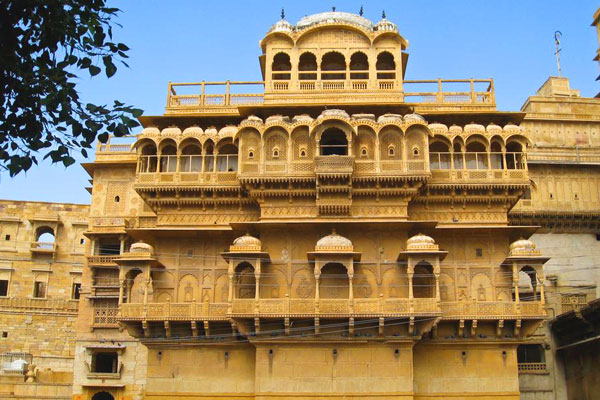
City Palace Jaisalmer
Perched within the fort’s walls, the City Palace echoes tales of Jaisalmer’s royal lineage. Built with intricate carvings and ornate balconies, it reflects the grandeur of Rajput artistry. The palace also houses a museum, offering glimpses of weapons, costumes, and relics that narrate centuries of desert royalty. Standing here, you don’t just witness architecture—you step into the royal heartbeat of Jaisalmer.
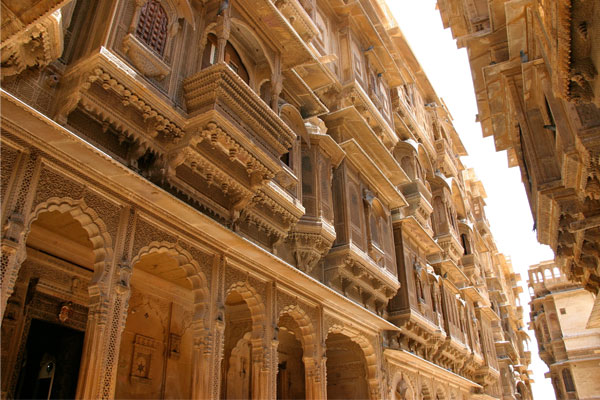
Patwon Ki Haveli
Known as the “mansion of merchants,” Patwon Ki Haveli is a cluster of five grand havelis built in the 19th century. Its golden façade is adorned with elaborate jharokhas, archways, and latticework that showcase the finest craftsmanship of Jaisalmer. Once home to wealthy traders, the haveli now stands as a living museum, reflecting the prosperity and artistic flair of the desert’s trading era. Walking through its courtyards feels like stepping into a golden chapter of history.
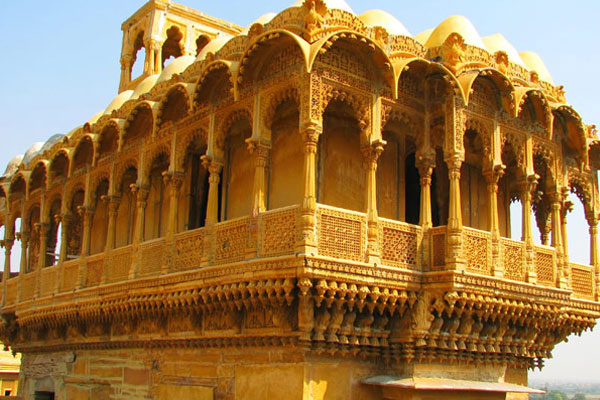
Salim Sigh Ki Haveli
Built in the early 18th century, Salim Singh Ki Haveli stands out with its unusual architecture and peacock-shaped roof. Its narrow façade, supported by stone brackets, gives it a striking look unlike any other haveli in Jaisalmer. The residence once belonged to the powerful prime minister Salim Singh, whose vision brought together bold design and intricate stone artistry. Today, the haveli is admired for its curved balconies, delicate carvings, and the stories of ambition it silently carries.
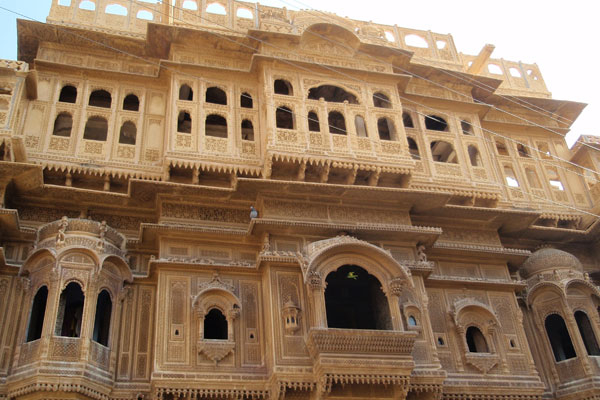
Nathmal Ki Haveli
Nathmal Ki Haveli is a masterpiece of craftsmanship, built in the late 19th century by two architect brothers. Each brother worked on opposite sides of the haveli, resulting in a fascinating blend of symmetry and subtle differences. The exterior is adorned with delicate carvings of flowers, animals, and even modern inventions like cars and fans—proof of the artists’ creativity. Inside, intricate paintings and ornamental designs reflect the grandeur of Jaisalmer’s merchant past, making this haveli a living gallery of stone art.
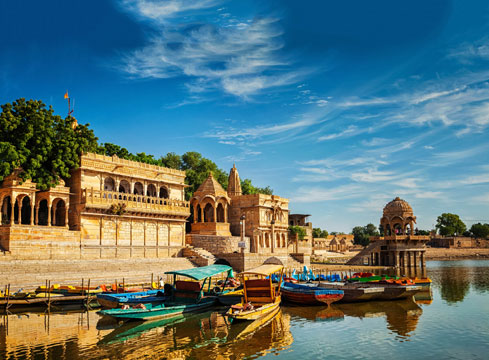
Gadisar Lake
Built in the 14th century by Maharaja Gadsi Singh, Gadisar Lake was once the lifeline of Jaisalmer. Today, it is a serene retreat where history meets nature. The calm waters are surrounded by intricately carved temples, shrines, and ghats that reflect beautifully in the lake. Early mornings bring flocks of migratory birds, making it a paradise for birdwatchers and photographers. Visitors can enjoy boat rides while soaking in views of sandstone structures and the distant fort. With its blend of spirituality and scenic charm, Gadisar Lake remains one of Jaisalmer’s most peaceful escapes.
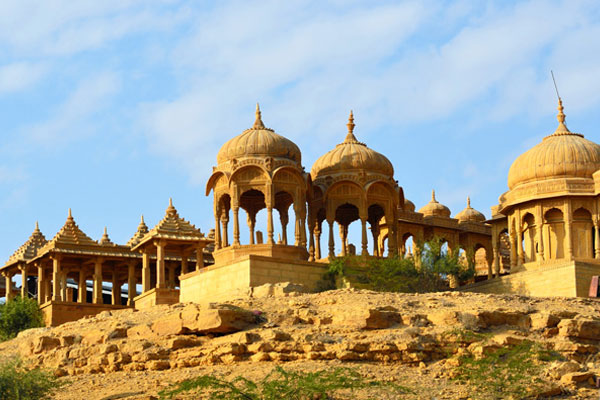
Vyas Chhatri
Perched on a small hill, Vyas Chhatri is a stunning collection of sandstone cenotaphs dedicated to Sage Vyas, the writer of the Mahabharata, and the noble rulers of Jaisalmer. The finely carved pavilions and domes glow beautifully under the desert sun, especially at sunset when the sky turns golden. This site is not just a place of remembrance but also a favorite spot for photographers, offering sweeping views of the city and the fort. Its peaceful atmosphere and architectural grace make it a must-visit landmark in Jaisalmer.
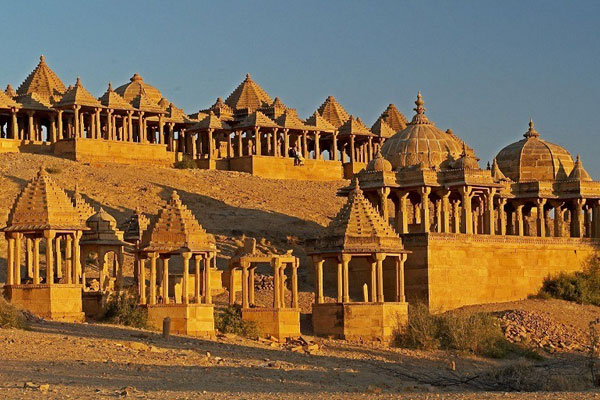
Bada Bagh
Bada Bagh, meaning “Big Garden,” is a tranquil site just outside Jaisalmer, known for its impressive cenotaphs of the Bhatti rulers. Set against the desert landscape, the carved sandstone chhatris stand in rows, each telling a story of the royal lineage. The place becomes especially enchanting during sunrise and sunset when the cenotaphs cast long golden shadows across the sand. With its blend of history, architecture, and serenity, Bada Bagh is a perfect spot for those seeking both heritage and natural beauty in one visit.
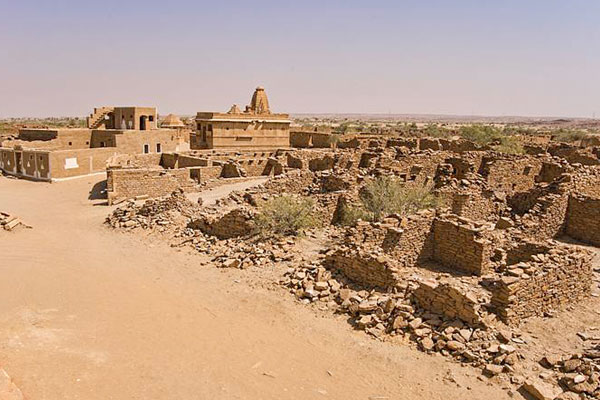
Kuldhara Abandoned Village
Kuldhara is one of Jaisalmer’s most intriguing sites, known as the “ghost village” of Rajasthan. Once a thriving settlement of the Paliwal Brahmins, it was mysteriously abandoned overnight centuries ago, leaving behind an eerie silence that still lingers today. Walking through its crumbling houses, narrow lanes, and ruined temples feels like stepping into a forgotten chapter of history. Surrounded by desert sands, Kuldhara is both haunting and fascinating, making it a must-visit for those curious about legends, folklore, and the mysteries of Rajasthan.
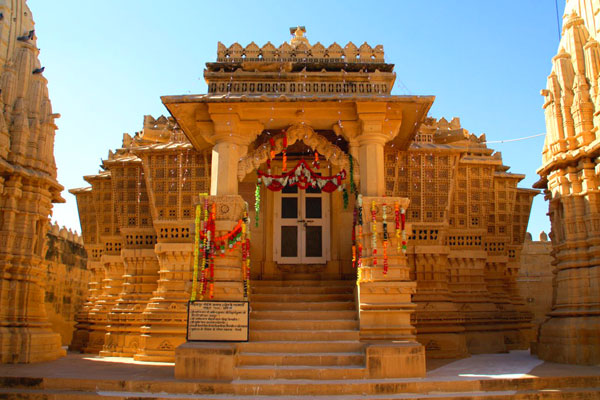
Lodarwa Jain Temple
Lodurva, once the ancient capital of the Bhatti dynasty, is today celebrated for its magnificent Jain temples. The main temple, dedicated to Lord Parshvanath, is a masterpiece of intricate stone carvings and delicate toranas (ornamental arches) that display the finest artistry of Rajasthan. The golden sandstone shines under the desert sun, giving the temple an almost divine aura. Surrounded by sand dunes and ruins of the old town, Lodurva Jain Temple is not just a place of worship but also a reflection of Jaisalmer’s spiritual and cultural grandeur.
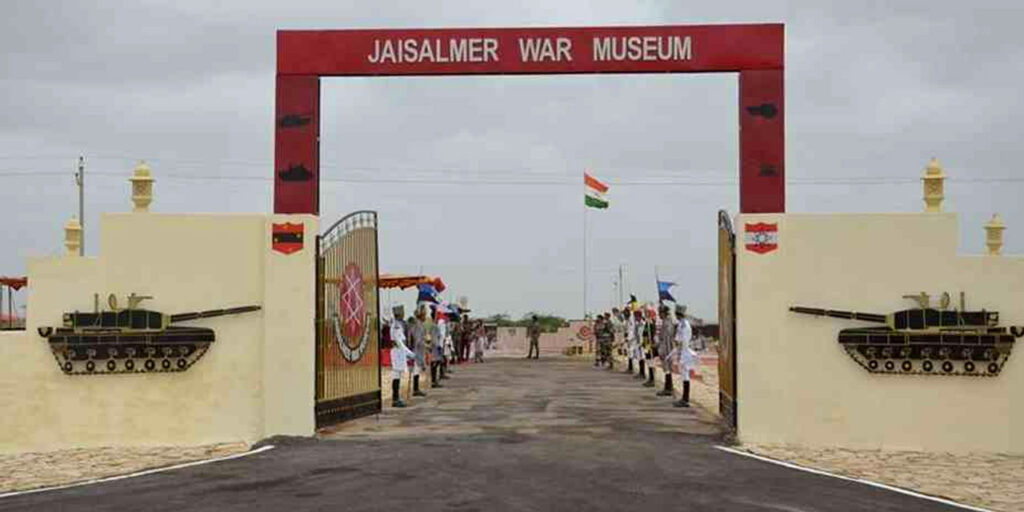
Longewala
Longewala is remembered as the battleground of the 1971 Indo-Pak war, where Indian soldiers displayed unmatched courage against overwhelming odds. Today, the site stands as a symbol of bravery with memorials, preserved bunkers, and war relics such as tanks and weapons. Surrounded by the stark beauty of the Thar Desert, Longewala offers visitors both a moving history lesson and an inspiring patriotic experience.
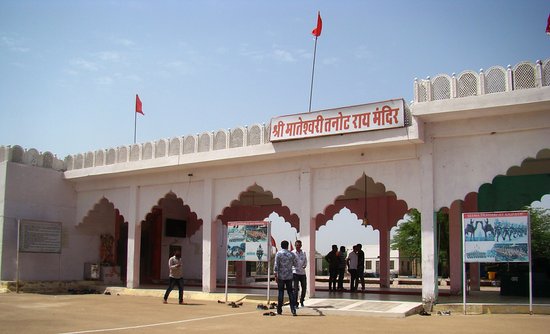
Tanot Mata Mandir
Tanot Mata Mandir, near the Indo-Pak border, is a revered temple deeply tied to faith and miracles. During the 1965 and 1971 wars, shells fired at the temple failed to explode, strengthening its legendary status. Maintained by the Border Security Force, the temple attracts pilgrims and tourists alike. Visitors come not only for its spiritual aura but also for the moving stories of divine protection and bravery.
